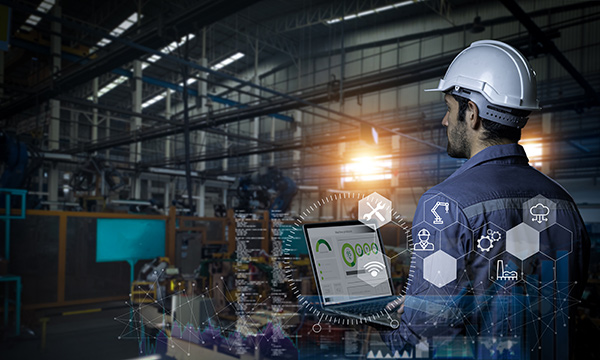As manufacturers approach 2026, they’ll need to balance agility with precision to overcome multiple challenges.
By Henrik Reif Andersen, chief strategy officer and co-founder, Configit
Manufacturing’s complex regulations, capabilities and evolving customer expectations require ongoing vigilance and innovation. Internal and external forces converge to complicate operations, including changing tariffs and laws. Knowing what lies ahead makes manufacturers’ jobs easier, so here are four predictions of what’s to come in the year ahead.

Tariffs have had a significant impact on the manufacturing sector in 2025, and October saw U.S. manufacturing contract for an eighth straight month. As the impact of tariffs on global trade continues to grow, manufacturers will be taking a closer look at their supply chains and target markets.
With the fallout from tariffs set to continue, the manufacturers who are able to stay competitive will be those that can reposition themselves in new markets rapidly. This will require ensuring regulatory compliance is in place and local market expectations match product offerings. A centralized approach to product knowledge with validated rules to safely and quickly adapt to the changes is essential.
With the rapid development of AI comes changes to customer expectations. As tools that can be used by everyone for creating high-quality text and visual outputs are becoming widespread, expectations on manufacturers will increase. They need to support fast turn-around times on customer enquiries with quotations that are of high quality in whatever language and form is expected by the customer. Manufacturers risk appearing outdated if they cannot live up to the expected increased speed and quality of getting correctly configured and priced quotations to customers. Prospects and customers will expect the ability to interact with natural language through chat or voice interfaces. They will expect manufacturers to be able to use the technical documentation they provide in the format they provide it. This will start to become table stakes as customers increasingly experience this multi-modal ability in their everyday lives – they will also come to expect it in their business interactions.
Regulation is a highly fraught topic in this industry, and organizations doing business across different geographies and/or industries are finding themselves grappling with a patchwork of different compliance requirements. Those mandates differ from country to country, and state to state. Requirements that are focused on safety and sustainability don’t show signs of slowing down. For instance, in the European Union, there are new packaging waste regulations that go into effect in 2026 that will require all packaging on the EU market to be recyclable in an economically viable way by 2030. Next year will also see the full-scale rollout of digital product passports in the EU, which are digital documents that contain vital information about a product’s origin, materials, environmental impact and disposal recommendations. Batteries will be the first product category to be legally required to comply with this regulation sometime in 2026, with around 30 other categories to follow between 2026 and 2030.
Manufacturers need to be compliant to avoid fines and damage to their brands, but the complexity of the regulations increase the risk of unintentionally being non-compliant. It is therefore important that manufacturers apply technology that ensure systematic compliance on each configuration of their product in every market where they operate.
Digital transformation, today driven larger by AI, shows no signs of slowing. Organizations can’t afford to stay rooted in slow, legacy operations and overly complex manual processes.
In 2026, we’re going to see the manufacturing industry make great strides here, as underscored by the extensive technological investments we’re already seeing. Automation of key business processes will be of greater importance.
The pressure continues to get alignment of product data across the extended enterprise, from suppliers through internal functions to after-sales operations. Any company that wants to stay competitive must consider how to take the next steps on an end-to-end digitalization of their business.
Manufacturing’s future will belong to those who can balance agility with precision. As tariffs fluctuate, customer expectations rise and regulations multiply, the ability to rapidly adapt without compromising compliance or quality will define industry leaders. Digitalization is no longer optional; it’s the foundation for resilience and competitive advantage. By investing in connected data, automated compliance and intelligent customer engagement, manufacturers can turn complexity into opportunity and move confidently into the year ahead.

About the Author:
Henrik Reif Andersen is the chief strategy officer and co-founder of Configit, the global leader in Configuration Lifecycle Management (CLM) solutions and a supplier of business-critical software for the configuration of complex products. He holds a doctorate in computer science from the University of Aarhus and has more than 25 years of experience in IT development and research.
Read more from the author:
Improving the Post-sales Customer Experience | May 2023
Building a Better Customer Experience in Manufacturing | June 2022
In this episode, I sat down with Beejan Giga, Director | Partner and Caleb Emerson, Senior Results Manager at Carpedia International. We discussed the insights behind their recent Industry Today article, “Thinking Three Moves Ahead” and together we explored how manufacturers can plan more strategically, align with their suppliers, and build the operational discipline needed to support intentional, sustainable growth. It was a conversation packed with practical perspectives on navigating a fast-changing industry landscape.